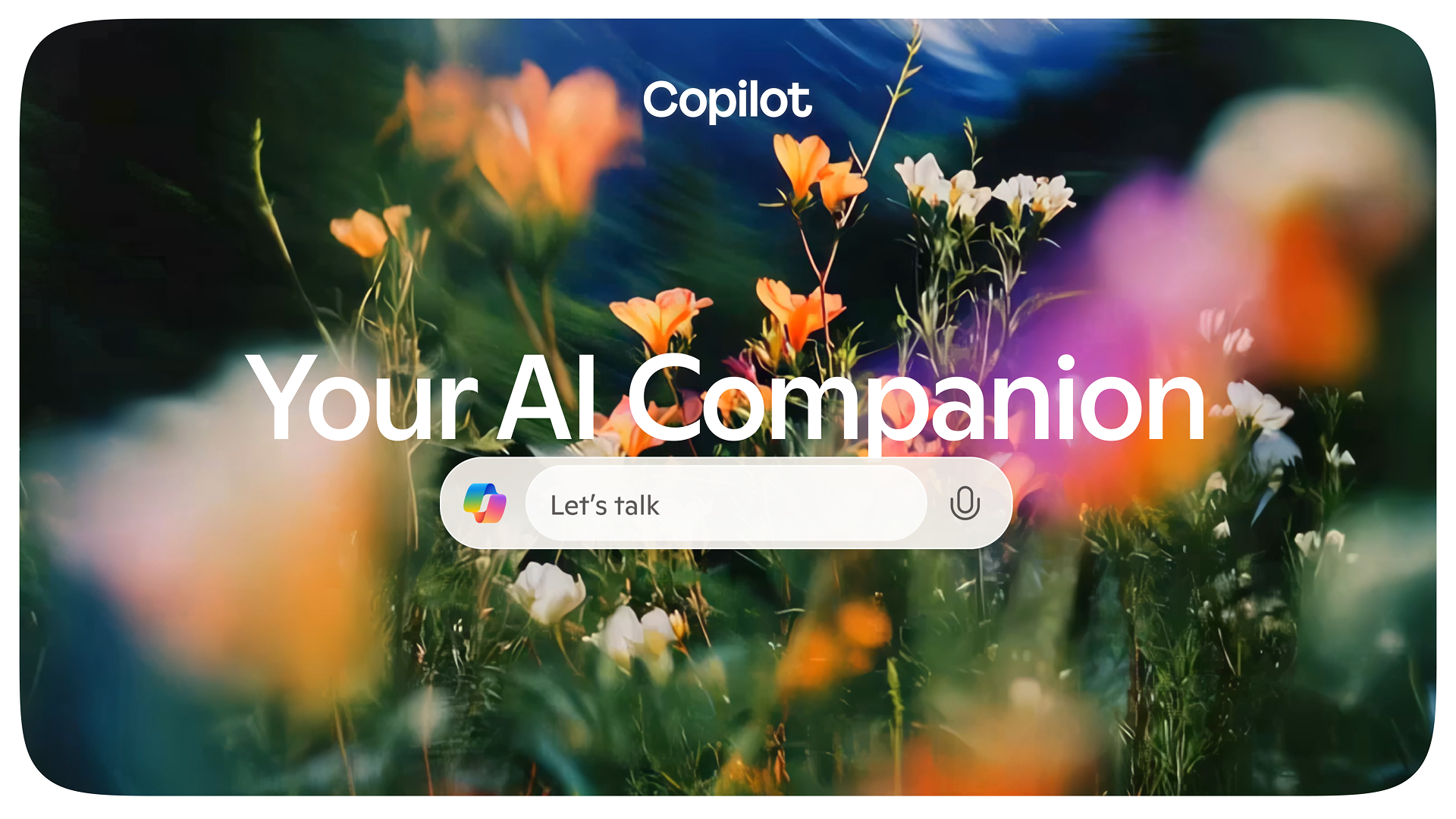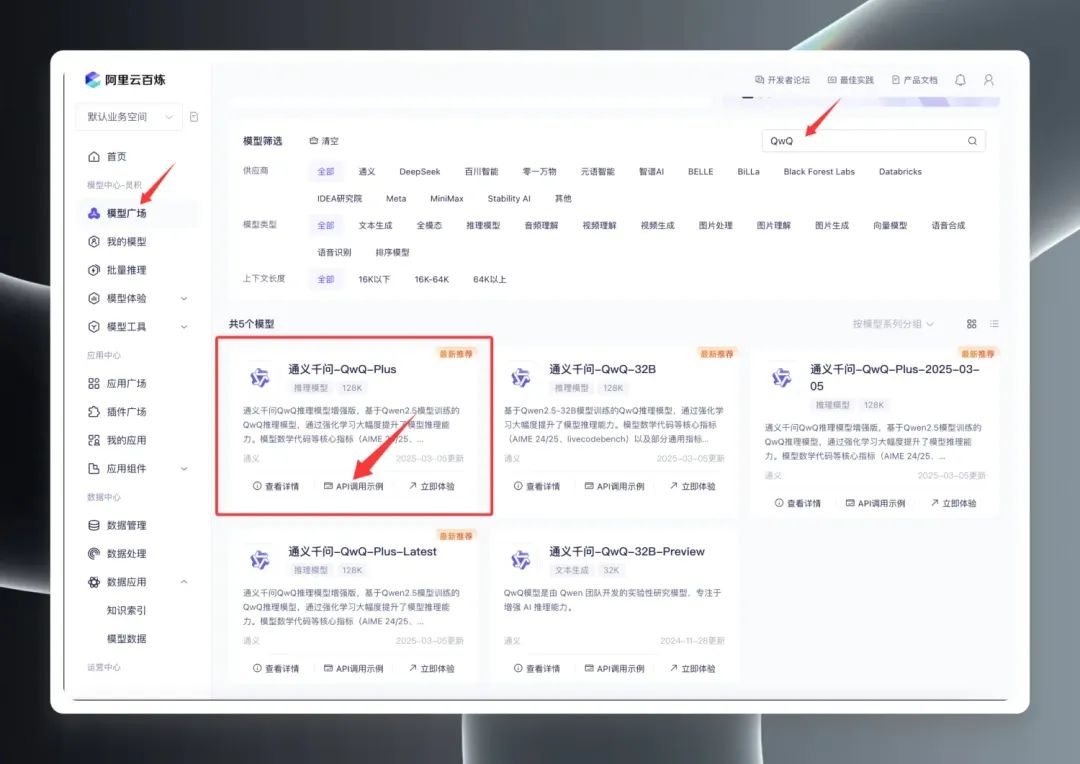Kimi vs. Beanbag In-Depth Comparison Review - Which is better?
-How to choose the right AI assistant for you?
With the advent of the big model era, various manufacturers have launched their own unique AI assistants. On the market. Kimi together with beanbag These two products have attracted a lot of attention because of their unique advantages. In this article, we will comprehensively analyze the two products from multiple dimensions, such as interface, functions, answer quality, experience and ecological expansion, to help users make the best choice according to their own work scenarios and usage habits.
1. Interface design and user experience
Beanbag:
- Friendly UI design and rich function displayBeanbag's interface design is overall simple and intuitive, with interactive elements such as the sidebar and the stroke tool allowing users to access functions such as translation, summarization and error correction in one click. A number of reviews have pointed out that Doubao's interface is designed to make it easy for new media writers and content creators to quickly extract the information they need, and its rich functionality makes it easier to operate.
The new version of Doubao focuses more on scenario-based application, compared to the previous positioning "assistant that can do everything", now it is more clearly targeted for use.
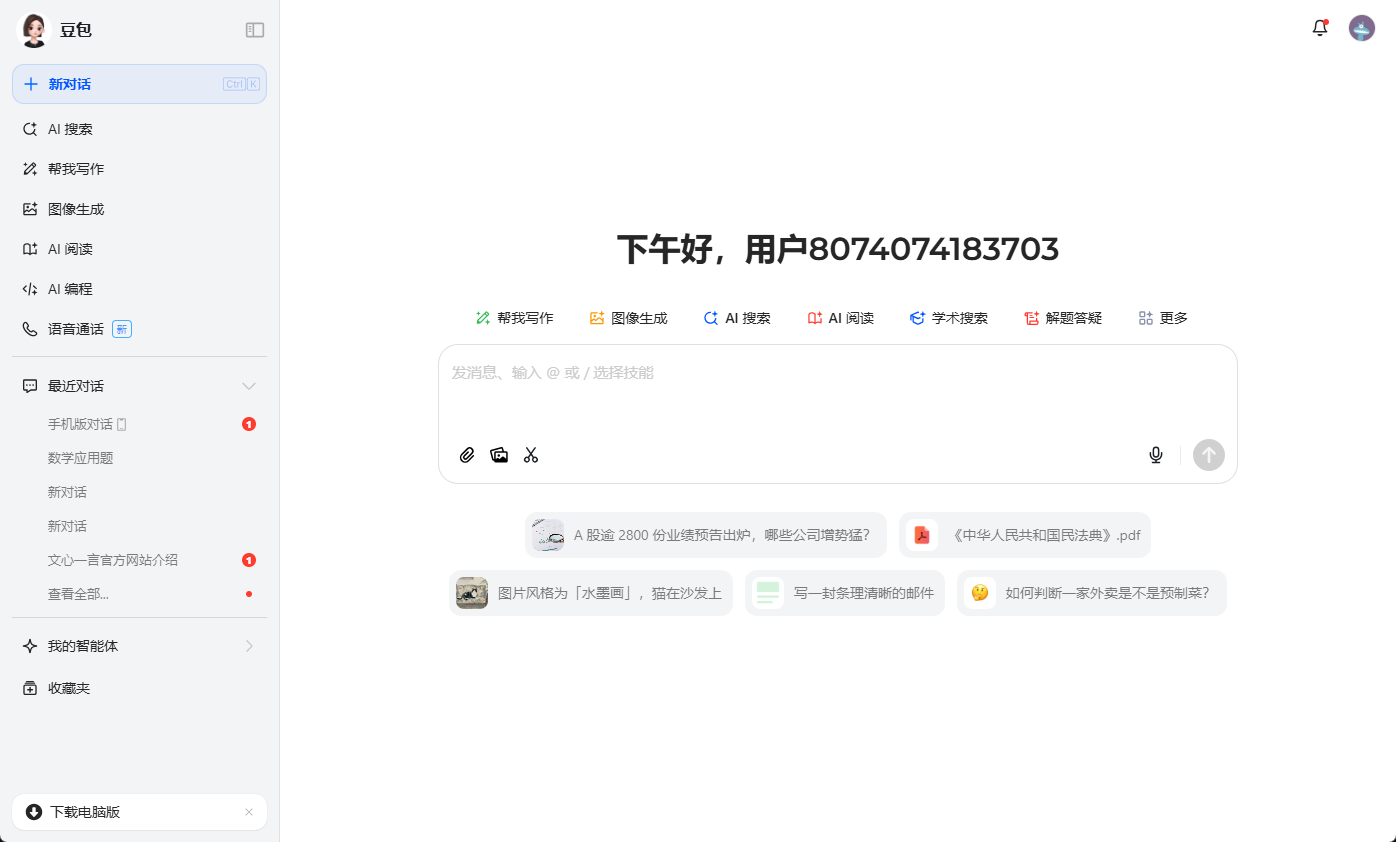
New Doubao main interface
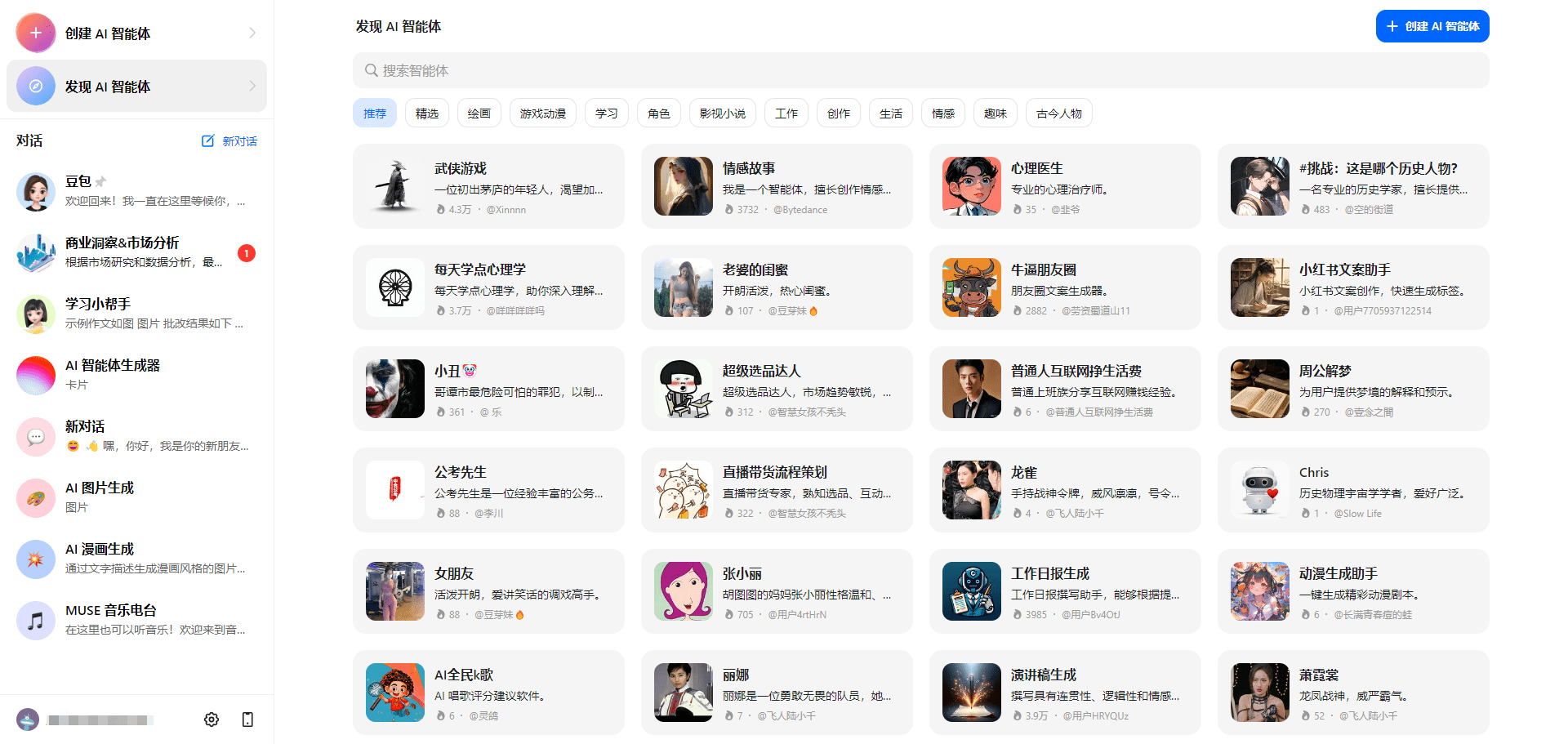
The main interface of the old version of Doubao
Kimi:
- Global Hover and Efficient Interaction ExperienceCompared to Beanbag's sidebar, Kimi supports launching a global hover window via a shortcut key, which is suitable for users who need to quickly invoke the AI assistant in any application. This design is especially suitable for office scenarios that require long text processing, contextualization and real-time summarization. Some experience reports mention that when performing text interpretation and in-depth summarization, Kimi is able to make better use of contextual information to achieve finer-grained explanations.
Kimi The assistant-like tools are tucked away in Kimi+ in the sidebar, or commands can be evoked via shortcuts, keeping the interface simple and suitable for reviewing long texts.
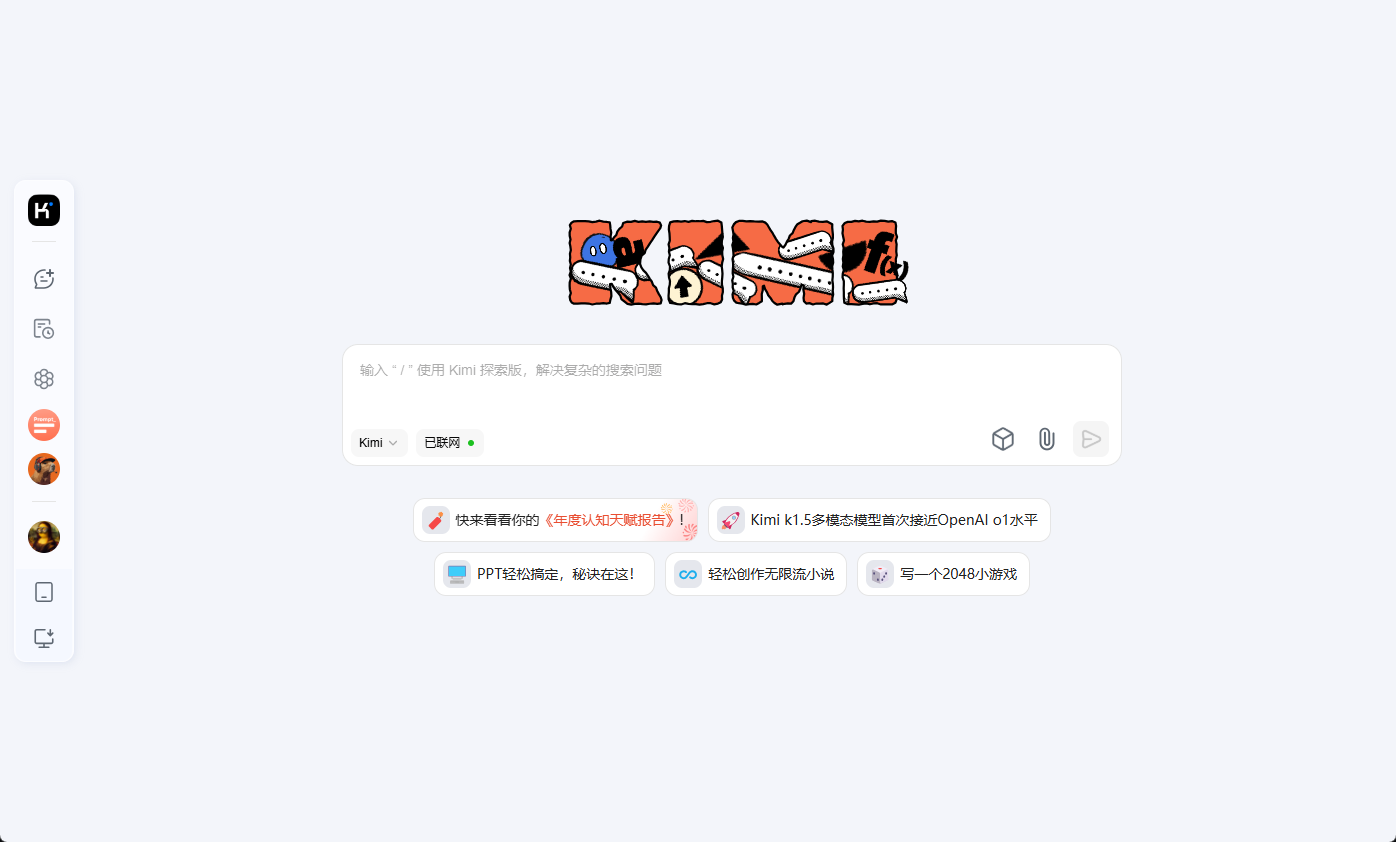
2. Comparison of functions and modules
Core Functions:
- Document and Web Page ParsingBoth products support parsing of TXT, PDF, Word, PPT and other format files, and can handle web links. However, in actual use, Beanbag tends to have a higher success rate and speed in parsing web content, while Kimi, although it also has the ability to parse, occasionally fails to do so.
- Search and Multilingual SupportBoth support real-time search and Chinese/English dialog, but Kimi shows stronger ability in full-text summarization and keyword refinement after combining context, especially suitable for users who need cross-language and cross-domain applications.
- Plug-ins and ExtensionsFor the browser plug-in version, Beanbag provides a number of extensions including stroke translation, grammar correction, and video summarization; while Kimi focuses on instant invocation of global hover windows and supports customization of commonly used prompts and role-playing, thus bringing a smoother experience in some work scenarios.
Add-ons:
- Code output, document generation and other specialized capabilitiesAlthough both products are constantly iterating and improving, in the current version, Kimi performs slightly better in contextual analysis and reasoning output (e.g., code interpretation and logic combing); while Doubao focuses more on multi-scenario applicability, especially in copywriting and content proofreading, which demonstrates a high level of efficiency.
3. Quality of answers and reasoning
Kimi:
- In complex contexts, Kimi is better at utilizing the full text context for in-depth interpretation. Whether it is the interpretation of technical terms or the distillation of long text summaries, Kimi can provide more comprehensive and detailed answers. This gives it an advantage in office scenarios that require precise analysis and logical reasoning. Especially the newly launched Kimi 1.5:Unfortunately the Kimi k1.5 technical report released alongside DeepSeek-R1 improves long context and multimodal inference
Beanbag:
- Beanbag, on the other hand, focuses on rapid response and content creation assistance, and the answer style is usually more colloquial and entertaining. For daily conversations, content supplementation and new media writing, Doubao's answers are able to quickly capture keywords and generate results that meet expectations. However, when it comes to reasoning and interpreting the details of very complex questions, some users report that its performance is slightly inferior to Kimi.
4. Ecology and application scenarios
The ecological advantages of beanbags:
- Relying on ByteDance's huge ecosystem, Doubao integrates the strengths of content platforms such as Jitterbug and Today's Headlines, giving the product a greater advantage in terms of entertainment and popularity. For users who focus on new media, life-oriented scenarios and rapid content generation, Doubao's experience is closer to actual needs.
Kimi's development strategy:
- Kimi, on the other hand, is positioned more in the areas of office, professional copywriting and complex data processing. Its support for global hover calls and deep understanding of context makes it more competitive in handling long texts, professional documents and scenarios that require fine reasoning. In addition, Kimi is constantly improving its custom applications and frequently used prompt word settings in an effort to provide users with more personalized services.
5. Conclusions and recommendations
The two AI assistants have their own merits, and users should choose according to their own needs:
- If you need
- A tool for everyday life, new media creation and rapid content generation
- A product with an intuitive interface, easy to use and rich in features (e.g., scratch words, translation, video summarization, etc.).beanbagwould be a good choice. It relies on a strong ecosystem and a friendly user interface to provide efficient support in most daily application scenarios.
- If you focus more on
- Office, professional reports, and applications that require in-depth parsing of long texts
- High demand for features such as contextual understanding, complex problem summarization and specialized code interpretation thenKimiIt may better fulfill your requirements. Its global hover window and precise contextual extraction capabilities make working with specialized information a better experience.
To summarize, no matter you are a new media creator, an enterprise worker or a professional researcher, you can choose the most suitable AI assistant from Doubao and Kimi according to your own usage scenarios and needs. In the future, the two products will also continue to be iteratively updated, and the continuous expansion of functions and ecology will bring more surprises and efficient experiences to users.
© Copyright notes
Article copyright AI Sharing Circle All, please do not reproduce without permission.
Related articles

No comments...



